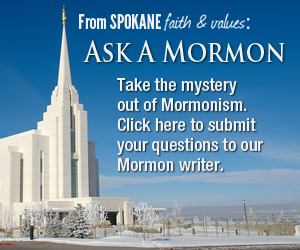Do you have a question about the Church of Jesus Christ of Latter-day Saints? Submit it online or fill out the form below.
Why Salt Lake?

The Church of Jesus Christ of Latter-day Saints was first organized in Fayette Township, New York in April of 1830 with 56 people in attendance at the meeting. The Church in New York began to grow in numbers and with that came suspicion and persecution from the surrounding communities. In the fall of 1830, the first Mormon missionaries were sent out to preach the gospel. They found their greatest success in Kirtland, Ohio where several hundred people were converted. In 1831, the Saints in New York heeded the call to gather as one body In Ohio, and they made the 250-mile journey to Kirtland.
Shortly after settling in Kirtland, the Prophet Joseph Smith led a group of about 30 elders on a proselytizing mission to Independence, Missouri where the Lord had revealed they would establish Zion. As a result, between the years of 1831 and 1838, the Church had two main population centers–one in Ohio and one in Missouri — and church leaders traveled back and forth as necessary.
Many events took place during this seven year period in both locations, but for the purposes of this article, we will continue to focus just on the Church’s movements. In 1838, organized persecution and mob violence against the Saints in Kirtland escalated to a point that it was unsafe for them to remain there, so they fled to Missouri, leaving behind a newly constructed temple. Unfortunately, the climate in MIssouri was not any better. Persecution and violence had been on the rise there since 1831, and it continued to increase with the ever growing population of Saints. Violent mobs attacked the Saints, Mormon homes and businesses were destroyed, and church leaders were beaten, tarred, and feathered. The violence reached a climax in October of 1838 when the Missouri governor, Lilburn W. Boggs gave an “extermination order” and decreed that “The Mormons must be treated as enemies, and must be exterminated or driven from the state if necessary.” Three days later, in what became known as the Haun’s Mill Massacre, a mob of 200 men launched a surprise attack against a small Mormon community, killing 17 people and wounding 15 others. Now forced to flee in the cold of winter, 8,000 Saints left Missouri, crossing into Illinois to escape the extermination order.
The exiled saints were welcomed in and given refuge in Quincy, Illinois. From there they moved north up the Mississippi River and built the city of Nauvoo. The period from 1839 – 1846 when the Church was in Nauvoo was one of relative peace and prosperity; the Church experienced significant growth, and they again built a temple. However, persecution soon began to rise again, culminating in the martyrdom of the Prophet Joseph Smith in 1844. By this time, church leaders had already been in discussion about moving the Saints west to the Rocky Mountains where they would be able to live in peace. With the intensifying persecution in Illinois, they knew that the time had come to take the Saints west. The exodus from Nauvoo was planned for April of 1846, but threats from the state militia moved the departure date up to February. The 1,300-mile journey to the Salt Lake valley was laced with hardships, but it was one that 70,000 Mormon pioneers would make. Missionary work had resulted in converts across America and in Europe, who also left their homes to gather with the Saints in the Rocky Mountains.
The first company of Mormon pioneers arrived in the Salt Lake Valley with the Prophet Brigham Young in July of 1847. President Young had been shown the place that the Saints should settle in a vision, and as they came out of the canyon and gazed upon the valley, he gave his infamous words, “This is the right place.” Four days later he would choose the construction site for the Salt Lake temple, which is still in operation today.
The Church of Jesus Christ of Latter-day Saints has become a worldwide church and no longer gathers together in one location, but Salt Lake City continues to serve as headquarters for the church. For members of the LDS faith, there is so much history rooted in downtown Salt Lake. And for the early members of the Church who sacrificed and endured so much, it truly was their “promised land.”
For a more detailed account of the history of the LDS Church, please see Our Heritage: A Brief History of The Church of Jesus Christ of Latter-day Saints.







Whats up this is somewhat of off topic but I was wanting to know if blogs use WYSIWYG editors or if you have to manually code with HTML. I’m starting a blog soon but have no coding expertise so I wanted to get advice from someone with experience. Any help would be greatly appreciated!